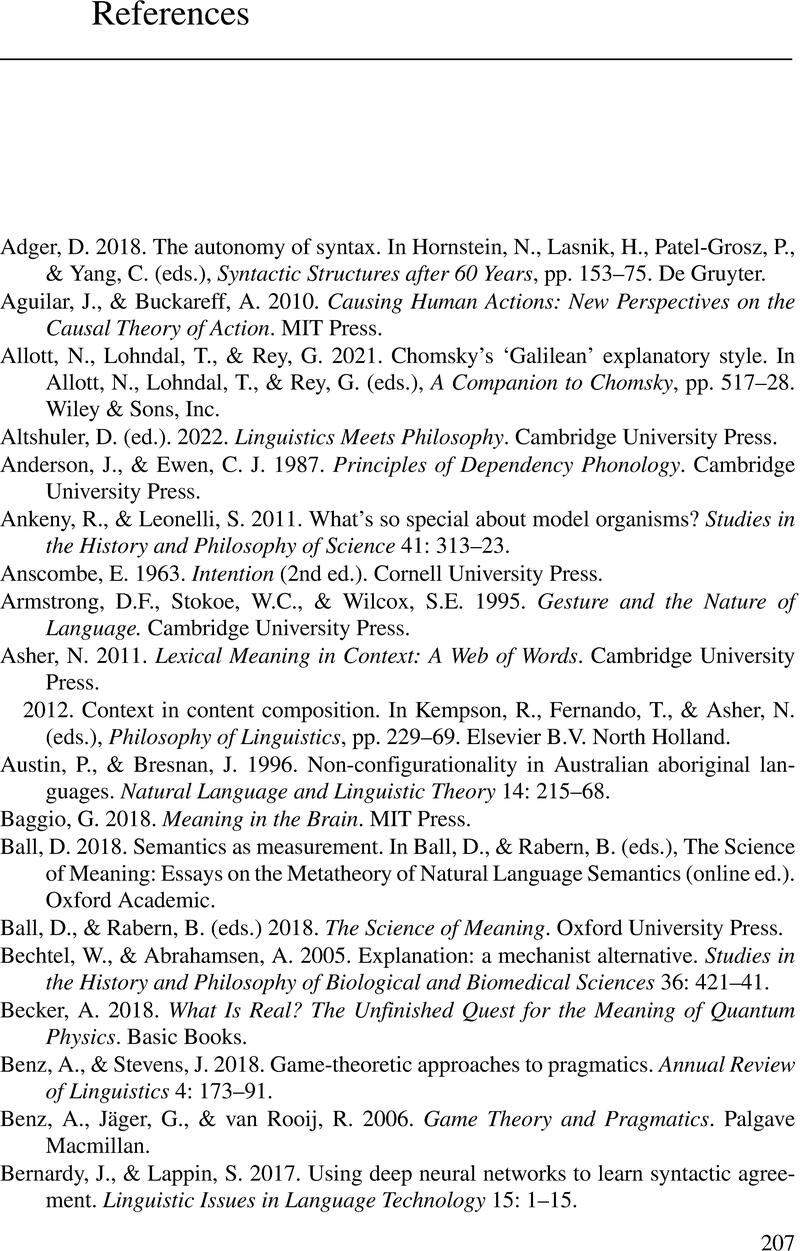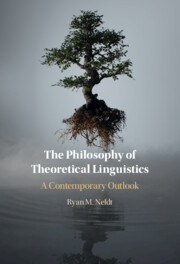Book contents
- Frontmatter
- Contents
- Figures
- Tables
- Preface
- Acknowledgements
- 1 Introduction
- 2 What Is a Possible Human Language?
- 3 Syntactic Metatheory
- 4 The Science of Semantics
- 5 Context and Pragmatics
- 6 Signs, Sounds, Action!
- 7 Computational Approaches to Language
- 8 Language and Evolution
- 9 Conclusion
- References
- Index
- References
References
Published online by Cambridge University Press: 25 April 2024
- Frontmatter
- Contents
- Figures
- Tables
- Preface
- Acknowledgements
- 1 Introduction
- 2 What Is a Possible Human Language?
- 3 Syntactic Metatheory
- 4 The Science of Semantics
- 5 Context and Pragmatics
- 6 Signs, Sounds, Action!
- 7 Computational Approaches to Language
- 8 Language and Evolution
- 9 Conclusion
- References
- Index
- References
Summary

- Type
- Chapter
- Information
- The Philosophy of Theoretical LinguisticsA Contemporary Outlook, pp. 207 - 228Publisher: Cambridge University PressPrint publication year: 2024



